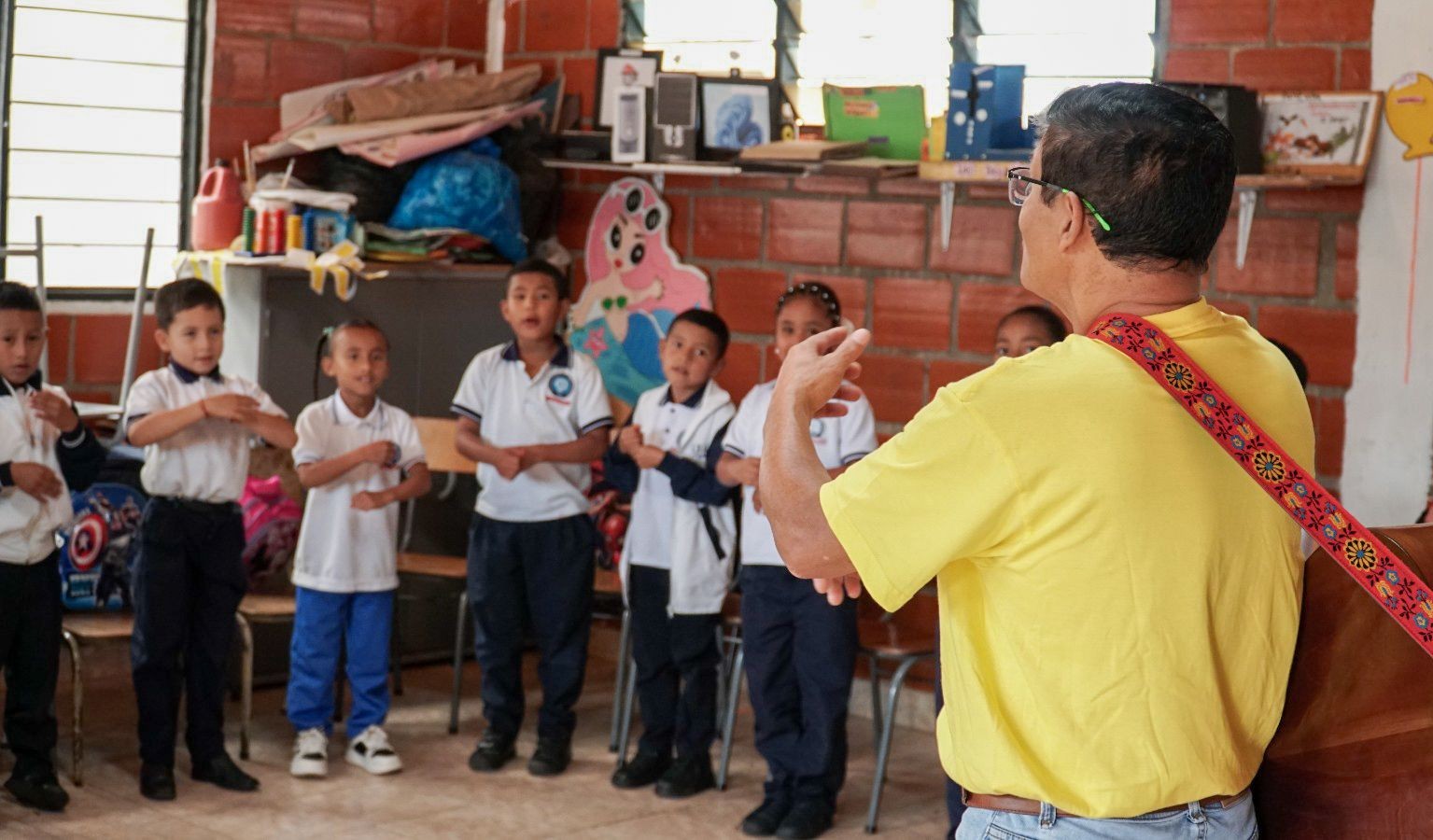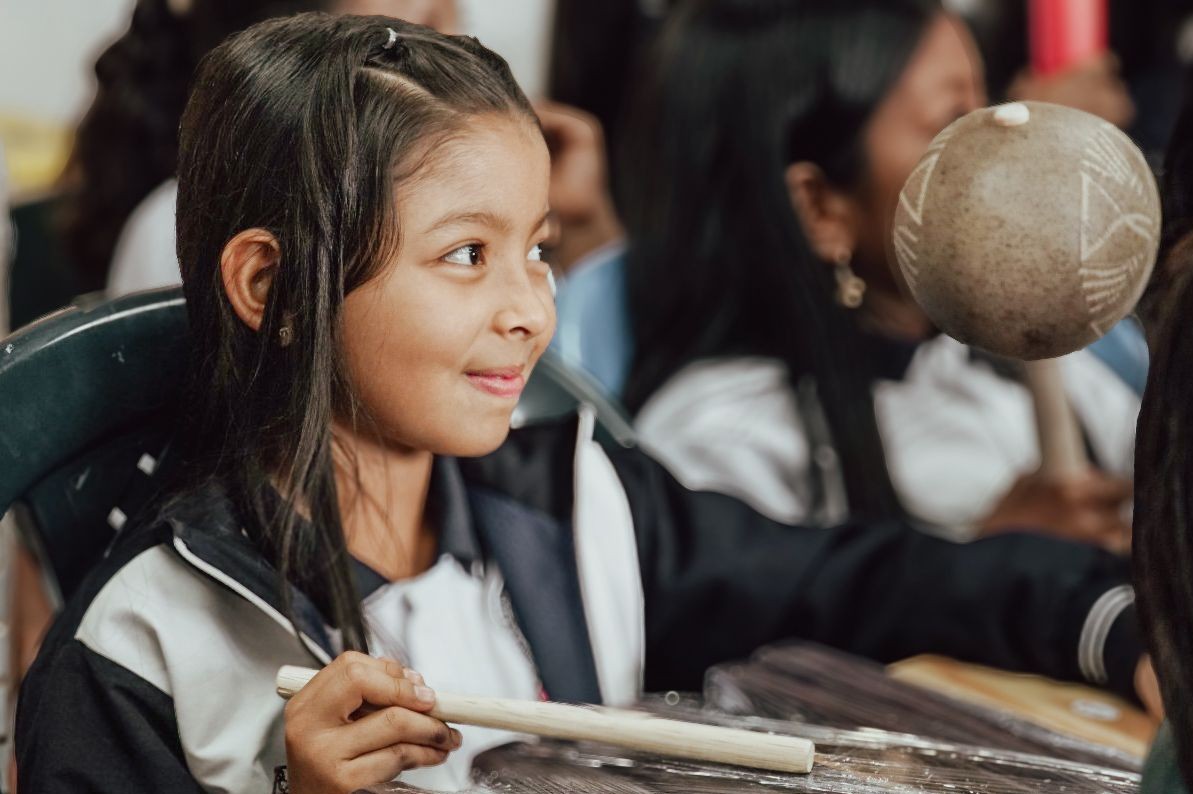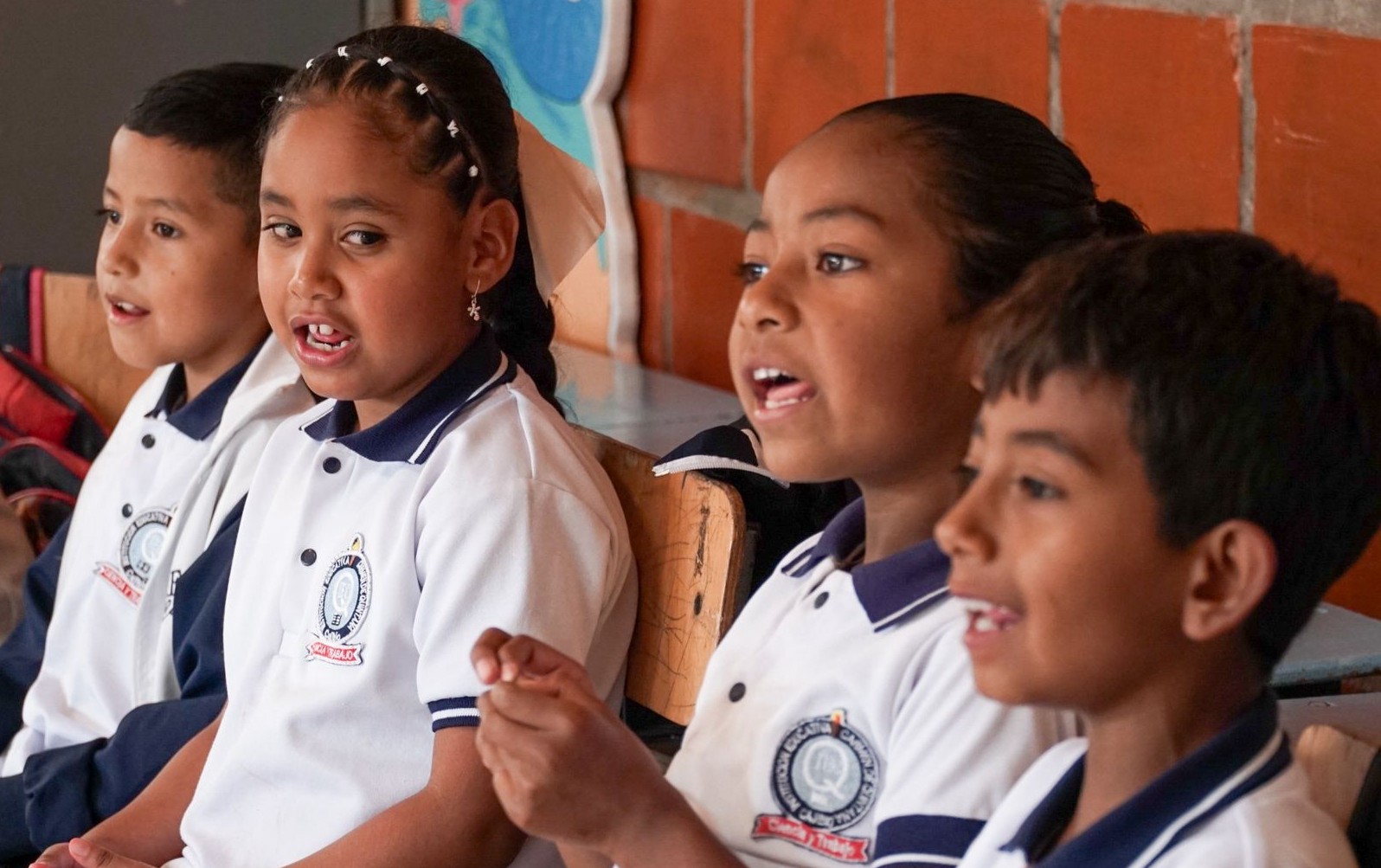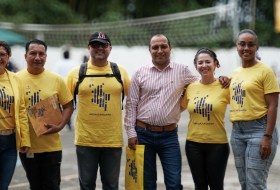News
Sounds that remain: with the delivery of musical instruments, we strengthen arts education as a legacy and cultural heritage in Cajibío, Cauca
In the southwest of Colombia, among green mountains and echoes of cultural resistance, something resonates differently. This is the spirit of “Sounds for Peacebuilding”, a program of the Ministry of Cultures, Arts and Knowledge, led in Zone 6 by the University of Cauca. As its name suggests, it recognizes the transformative power of education and artistic practices to reconcile, heal, and weave a shared future.
With the support of the territorial team from Node 6, the Ministry delivered a set of 89 musical instruments and 15 music stands to the Carmen de Quintana Educational Institution, located in the municipality of Cajibío, Cauca. Here, 216 children, adolescents and youth, direct beneficiaries of the processes fostered by this major initiative are now the voices behind the sounds emerging from classrooms and schoolyards, allowing hope to rise like a fresh breeze.

Provided photo
This region, where communities have been the involuntary protagonists of a complex and shifting war, and where peace remains elusive, sought on every corner, is also a birthplace of cultural and social resistance. Schools are not only centers of learning; they are sanctuaries, symbolic trenches, and spaces of care.
The Presidential Program serves 538 children, adolescents and youth throughout Cajibío through pedagogical processes that nurture their artistic talents.
But this is not only about learning to play an instrument. It is about planting sensitivity and understanding art as a language, as therapy, as shield, and as collective voice, one that recognizes and respects the diversity of others.

Provided photo
With the arrival of this new set of musical instruments, the team from the University of Cauca had the opportunity to share with the educational community a gathering that included students from various campuses, teaching artists and cultural elders, administrators, teachers, the municipal secretary of education, and the territorial team of Node 6, an event that strengthened collective goals and fostered collaborative leadership.
Through the empowerment of local communities, Sounds for Peacebuilding also seeks to consolidate long-lasting relationships, to build capacities, and to leave a legacy woven into the living fabric of the territories, rooted in the traditions and identities of the people.
The dedication of teaching artists and cultural elders reminds us that Cajibío, known as the "Musical Corner of Colombia," continues to see its history and future intertwined through pasillos, dances, and bambucos. In this land that gave birth to Efraín Orozco—renowned composer from Cauca and author of more than 400 musical works, Sounds for Peacebuilding sustains cultural legacies and preserves the memory of communities where art is inherited, honored, and defended.

Provided photo
The delivery of instruments is a significant step, but it must not be the only one. Instruments require technical support, ongoing teacher training, and community appropriation strategies. The experience in Cajibío offers key lessons: state and institutional will is possible, local leadership exists, and music remains an open door to the future.
Because if this event showed us anything, it’s that peace doesn’t always arrive in helicopters or under waving flags. Sometimes, it comes in the back of a truck loaded with instruments, quietly unloaded, and it stays opening up spaces for expression, identity, and coexistence.
Written by: UNICAUCA TEAM Presidential Program Sounds for Peacebuilding – Zone 6


